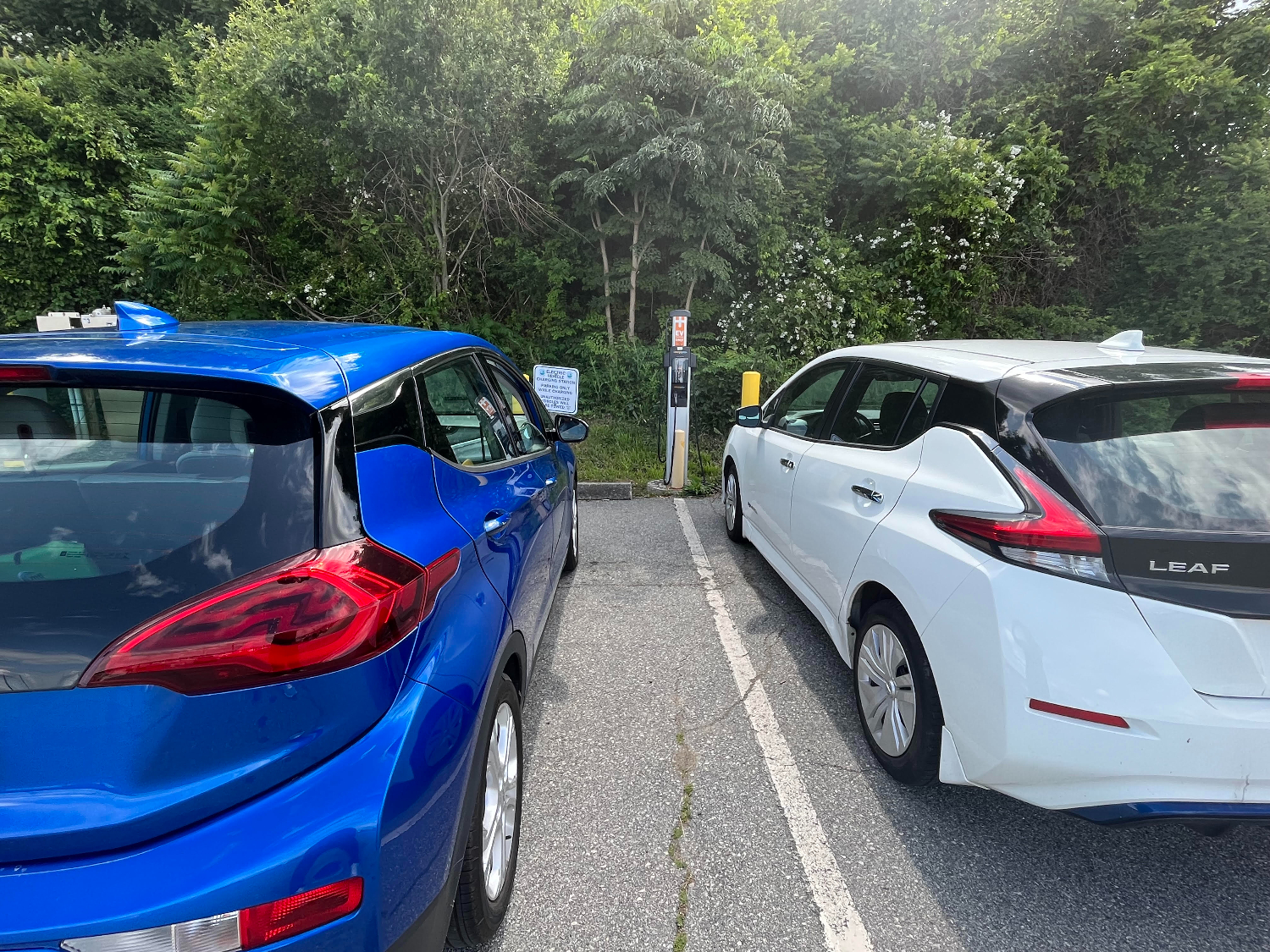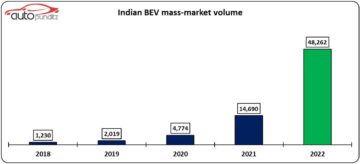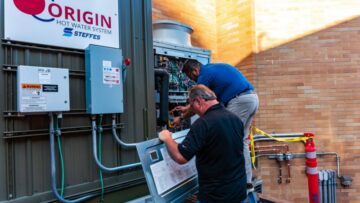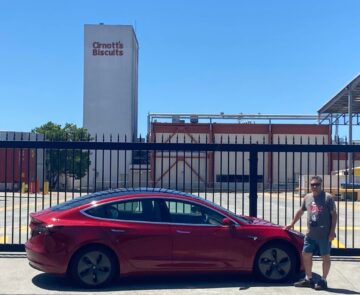
Sign up for daily news updates from CleanTechnica on email. Or follow us on Google News!
As of December, 2023, no electric vehicle (EV) charging stations had been constructed with the $7.5 billion in federal investment available through the Federal Highway Administration’s National Electric Vehicle Infrastructure Formula Program. The Program provides funding to states to strategically deploy EV charging infrastructure and to establish an interconnected network to facilitate data collection, access, and reliability.
States and the charger industry blame the delays mostly on what Politico calls “the labyrinth of new contracting and performance requirements they have to navigate to receive federal funds.” While federal officials have authorized more than $2 billion of the funds to be sent to states, fewer than half of states have even started to take bids from contractors to build the chargers.
Needless to say, that means federally funded charging infrastructure construction hasn’t begun.
Of course, Republican opponents aren’t helping to speed up the charging infrastructure process; instead, they continually try to shut down the Biden administration’s efforts to build a charging network by eliminating or at least restricting its funding.
No, 2023 was not the year in which new EV chargers were opened up and down US highways. Then again, it looks like 2024 will be the year when we see exponential growth of interstate DC fast chargers.
What the Federal Charging Infrastructure Funding Entails
Funding comes from the 2021 federal infrastructure law, which is a $5 billion federal program designed to increase EV charger stations mostly along major highway travel routes. The National Electric Vehicle Infrastructure (NEVI) program is administered by states, which can contract out the construction and operation of the charging stations to private companies.
As of February, 2023, all 50 states, Washington DC, and Puerto Rico were participating in the NEVI program. These initial investments will electrify over 75,000 miles of the national highway system. (The state plans for EV charging can be found here.)
Qualifying EV charging stations must be non-proprietary, allow for open-access payment methods, be publicly available or available to authorized commercial motor vehicle operators from more than one company, and be located along designated FHWA Alternative Fuel Corridors (AFCs). That means each station must be within one mile of a highway exit and have at least 4 chargers capable of charging at a rate of 150 kilowatts.
In order to receive NEVI program funding, EV charging station developers are required to ensure that all electricians working on EV supply equipment projects either be certified by the International Brotherhood of Electrical Workers’ Electric Vehicle Industry Training Program. They can also be a graduate or recipient of a continuing education certificate from a government-registered apprenticeship program with a focus on EVSE installation approved by the US Department of Labor in consultation with the FHWA.
New England States Move toward Public Charging Infrastructure
Let’s look at the New England states as an example of the varied progress toward public charging infrastructure installations.
Maine was among the quickest states in the country to make NEVI awards. The state selected contractors in August to build stations at 7 sites. Tesla, Irving Oil, and solar installer ReVision Energy were among the charging infrastructure companies chosen. Tesla has already begun construction on a station next to Hannaford Supermarkets in Rockland, Maine which is scheduled to open in mid-January.
Vermont selected a contractor to build a charging station in Bradford, which already has the electrical upgrades needed to support new chargers. The state is also currently seeking bidders to build stations at 13 more locations. The VT state goal is to have all the stations necessary to achieve fully built-out status under contract in 2024 and installed before the end of 2025.
Rhode Island has selected a contractor to build its first crop of NEVI stations, which will be located off Interstate 95 at “park and ride” locations in Warwick and Ashaway. RI’s State Plan for EV Infrastructure Deployment will not only build out main corridors but also help coordinate the use of all direct current fast charger (fast charging stations, DCFC) stations, workforce development, and plan maintenance and upgrades.
New Hampshire’s DOT has already sought bids to build charging stations along Interstates 93 and 89 as well as state Routes 9 and 16. Awards are expected this month with contracts finalized by April. NHDOT anticipates having multiple charging locations operational by fall of 2025.
Connecticut asked for letters of intent from companies interested in bidding for sites in November. Sometime early in 2024 CT DOT will issue a RFP to build charging infrastructure across 12 zones that encompass parts of Interstates 95, 91, 84, 395, and Route 7.
A Case Study: Massachusetts & NEVI
Massachusetts (MA) has taken quite a gradual approach to the NEVI process, with the expressed goal of accelerating construction over time.
The MA Department of Transportation began in June, 2023 by distributing 28 questions about building EV charging stations. In December, MA sent out an RFP to companies who had expressed an interest in building new charging stations, supporting the state’s goals to invest $60 million 5 years.
Fossil fuel companies like Shell and BP responded, as did 26 other companies, according to the Boston Globe. Initial respondents expressed a desire to partner with MassDOT through a streamlined process. By January 11 interested charging companies must present their qualifications to build stations. MassDOT will select 5 companies to enter into pre-development agreements by May, 2024.
At that point MA will give the go-ahead for that group of 5 to build out the first phase of charging stations along the targeted highways. Locations selected are major thoroughfares currently underserved by DC fast charging infrastructure: Route 2, Interstate 91, Interstate 495, and a section of Interstate 195 near Fall River and New Bedford.
EV ownership in MA is growing, and DC fast charging infrastructure is essential for continued EV adoption. At the end of 2023 there were just over 90,000 EVs on MA roads, which are anticipated to climb to 200,000 EVs by 2025 and 1 million EVs by 2023, which are in line with the state’s climate goals. While significant, those numbers amount to less than 20% the current 5.2 million vehicles registered in MA.
EV sales growth would certainly expand if consumers were confident about having access to frequent and reliable charging options.
Critics say it’s not moving fast enough. Some lawmakers and climate groups have urged the state to move more strategically and quickly on charging as a way to encourage more drivers to switch to EVs.
Have a tip for CleanTechnica? Want to advertise? Want to suggest a guest for our CleanTech Talk podcast? Contact us here.
Our Latest EVObsession Video
[embedded content]
I don’t like paywalls. You don’t like paywalls. Who likes paywalls? Here at CleanTechnica, we implemented a limited paywall for a while, but it always felt wrong — and it was always tough to decide what we should put behind there. In theory, your most exclusive and best content goes behind a paywall. But then fewer people read it!! So, we’ve decided to completely nix paywalls here at CleanTechnica. But…
Thank you!
Advertisement
CleanTechnica uses affiliate links. See our policy here.
- SEO Powered Content & PR Distribution. Get Amplified Today.
- PlatoData.Network Vertical Generative Ai. Empower Yourself. Access Here.
- PlatoAiStream. Web3 Intelligence. Knowledge Amplified. Access Here.
- PlatoESG. Carbon, CleanTech, Energy, Environment, Solar, Waste Management. Access Here.
- PlatoHealth. Biotech and Clinical Trials Intelligence. Access Here.
- Source: https://cleantechnica.com/2024/01/06/states-need-to-step-up-their-ev-charging-infrastructure-is-2024-the-year/
- :has
- :is
- :not
- $UP
- 000
- 1
- 11
- 12
- 13
- 15%
- 150
- 16
- 195
- 200
- 2023
- 2024
- 2025
- 26
- 28
- 36
- 50
- 7
- 75
- 84
- 9
- 90
- 91
- a
- About
- accelerating
- access
- According
- Achieve
- across
- administered
- Adoption
- Advertise
- Affiliate
- again
- agreements
- All
- allow
- along
- already
- also
- alternative
- always
- among
- amount
- an
- and
- Anticipated
- anticipates
- approach
- approved
- April
- ARE
- AS
- asked
- At
- AUGUST
- authorized
- available
- awards
- BE
- been
- before
- began
- begun
- behind
- BEST
- biden
- Billion
- Bit
- BP
- brotherhood
- build
- Building
- but
- by
- CAN
- capable
- case
- case study
- certainly
- certificate
- Certified
- CFM
- charging
- charging stations
- chip
- chosen
- cleantech
- Cleantech Talk
- Climate
- climb
- collection
- comes
- commercial
- Companies
- company
- completely
- confident
- construction
- consultation
- Consumers
- content
- continually
- continued
- continuing
- contract
- contracting
- Contractor
- contractors
- contracts
- coordinate
- country
- course
- crop
- Current
- Currently
- data
- dc
- December
- decide
- decided
- delays
- Department
- Department of Labor
- department of transportation
- deploy
- designated
- designed
- desire
- developers
- Development
- DID
- direct
- distributing
- don
- DOT
- down
- drivers
- each
- Early
- Education
- efforts
- either
- Electric
- electric vehicle
- eliminating
- embedded
- encompass
- encourage
- end
- energy
- England
- ensure
- Enter
- equipment
- essential
- establish
- Ether (ETH)
- EV
- Even
- evs
- example
- Exclusive
- Exit
- Expand
- expected
- exponential
- Exponential Growth
- expressed
- facilitate
- Fall
- FAST
- February
- Federal
- federal officials
- federally
- felt
- fewer
- finalized
- First
- Focus
- For
- formula
- found
- frequent
- from
- Fuel
- fully
- funded
- funding
- funds
- Give
- goal
- Goals
- Goes
- gradual
- graduate
- Group
- Group’s
- Growing
- Growth
- Guest
- had
- Half
- Have
- having
- help
- helping
- here
- Highway
- highways
- HTTPS
- if
- implemented
- in
- Increase
- industry
- Infrastructure
- initial
- installation
- installed
- instead
- intent
- interconnected
- interest
- interested
- International
- into
- Invest
- investment
- Investments
- issue
- IT
- ITS
- January
- jpg
- june
- just
- labor
- labyrinth
- latest
- lawmakers
- least
- less
- less than 20%
- like
- likes
- Limited
- Line
- links
- located
- locations
- Look
- LOOKS
- Main
- Maine
- maintenance
- major
- make
- massachusetts
- May..
- means
- Media
- methods
- million
- Month
- more
- most
- mostly
- Motor
- move
- moving
- multiple
- must
- National
- Navigate
- Near
- necessary
- Need
- needed
- network
- New
- news
- Newsletter
- next
- no
- November
- numbers
- of
- off
- officials
- Oil
- on
- ONE
- only
- open
- opened
- operation
- operational
- operators
- opponents
- or
- order
- Other
- our
- out
- over
- ownership
- participating
- partner
- parts
- payment
- payment methods
- People
- performance
- phase
- plan
- plans
- plato
- Plato Data Intelligence
- PlatoData
- player
- podcast
- Point
- policy
- present
- private
- Private Companies
- process
- Program
- Progress
- projects
- provides
- public
- publish
- Puerto
- put
- qualifications
- Questions
- quickest
- quickly
- quite
- Rate
- Read
- Reader
- receive
- registered
- reliability
- Republican
- required
- Requirements
- respondents
- restricting
- River
- roads
- Route
- routes
- sales
- say
- scheduled
- Section
- see
- seeking
- select
- selected
- sent
- Shell
- should
- shut
- Shut down
- significant
- Sites
- So
- solar
- some
- sought
- speed
- started
- State
- States
- station
- Stations
- Status
- Step
- Stories
- streamlined
- Study
- suggest
- supply
- support
- Supporting
- Switch
- system
- T
- Take
- taken
- Talk
- targeted
- team
- Tesla
- than
- that
- The
- The State
- their
- then
- theory
- There.
- These
- they
- this
- those
- Through
- time
- tip
- to
- tough
- toward
- Training
- transportation
- travel
- try
- under
- underserved
- Updates
- upgrades
- us
- use
- uses
- Ve
- vehicle
- Vehicles
- Video
- want
- was
- washington
- Washington DC
- Way..
- we
- WELL
- were
- What
- when
- which
- while
- WHO
- will
- with
- within
- Workforce
- Workforce Development
- working
- would
- write
- Wrong
- year
- years
- you
- Your
- youtube
- zephyrnet
- zones









